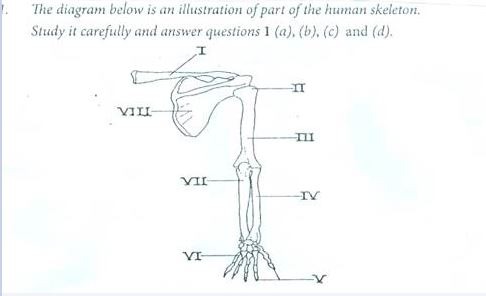WAEC Health Education Science Questions & Answers 2025 Released.
The Waec health science and health education answer for the essay and objective questions have been outlined in this post. The West African Examination Council (WAEC) Health Science and Health Education paper will be written on Friday, 14th June 2025.
The Waec health science education exam will comprise Papers II & I: Essay & Objective which will commence from 3:30 am to 6:00 pm. Below, we will be posting out waec health education science questions for candidates who will participate in the examination for practice purposes.
Related: WAEC Health Science Practical 2024 SSCE
The resources below on Health Science have been provided by WAEC to assist you in understanding the required standards expected in the Health Science Final Examination.
WAEC Health Science Questions 2024.
PAPER 1
1. (a) What is food preservation?
(b) Explain the following methods of food preservation: (i) Air drying; (ii) Vacuum drying; (iii) Pasteurization; and (iv) Salting.
(c) Give one example of each of foods best preserved by the methods explained above.
(d) (i) List four ways by which food could be kept in the home Under hygienic conditions.
(ii) Name two pests that could contaminate human food.
ANS:
2. (a) (i) Draw and label the forelimb of humans.
(ii) Mention three injuries that could occur at the forelimb.
(b) Name five structures of the male reproductive system.
(c) (i) What are vitamins?
(ii) Mention one deficiency disease each caused by a lack of Vitamins A and D.
ANS:

(a) (i) Labels I – head of humerus, II – humerus, III – radius, IV – phalanges, V – metacarpal, VI – carpal, VII- ulna, VIII – olecranon process
NB: Spellings must be correct to score.
(ii) Injuries that could occur at the forelimb
– fracture
– dislocation
– sprain
– strain
– burn/scald
– bruise/wound
(b) Structures of the male reproductive system
– penis/erectile tissue
– scrotum
– cowper’s gland
– testis
– seminal vesicle
– sperm duct/vas deferens
– epididymis
– prostate gland.
– urethra
NB: Spellings must be correct to score.
(c) (i) Vitamins Vitamins are essential chemical/organic compounds in the diet needed in small quantity for healthy growth and development of the body
(ii) Deficiency Diseases caused by vitamin A and D
Vitamin A
– keratomalacia/Dry skin.
– nightblindness
– xerophthalmia.
Vitamin D
– osteomalacia/soft bones
– rickets.
3. (a) (i) What is posture?
(ii) State three causes of postural defects
(b) List three defects of the foot
(c) State two corrective measures for postural defects.
4. (a) List two natural sources of water.
(b) State three general uses of water by humans.
(c) Name the international health agencies/organizations associated with the following functions:
(i) standardization of drugs for international use;
(ii) performing first aid activities and training personnel in first aid;
(iii) provision of recreational facilities and equipment for school children;
(iv) providing information on the outbreak of epidemics;
(v) rehabilitation of victims of wars, floods, or drought.
5. (a) Mention the three-body forms in humans.
(b) State two features of each body form mentioned in (a) above.
(c) State one factor necessary for the maintenance of health.
6.
PAPER 2
1. (a) (i) What are enzymes?
(ii) State five characteristics of enzymes
(iii) Name two enzymes involved in carbohydrate digestion in the body
(b) Name the end-product of digestion of
(i) carbohydrates;
(ii) proteins;
(iii) fats.
(c) State two uses each of the following classes of food:
(i) proteins;
(ii) vitamins.
(d) State two ways each in which the following substances are important
in the diet of humans:
(i) Roughage;
(ii) Water.
2. (a) Explain the following terms:
(i) shock;
(ii) fainting.
(b) (i) State three symptoms of shock
(ii) Outline the steps taken in the first aid treatment of shock victims.
(c) Explain the following terms:
(i) kyphosis;
(ii) scoliosis.
(d) Explain the following terms associated with bone injuries:
(i) dislocation;
(ii) sprain.
3. (a) (i) What is an endocrine gland?
(ii) State three functions of adrenalin.
(b) State three effects of each of the following conditions in humans:
(i) over-secretion of thyroxin;
(ii) under-secretion of thyroxin.
(c) (i) Write HIV in full.
(ii) Distinguish between HIV and AIDS.
(d) State two methods each by which the vectors of the following diseases can be controlled:
(i) onchocerciasis;
(ii) schistosomiasis;
(iii) guinea worm.
4.
Keep following this page and make sure you bookmark this site for reference purposes.
PS: Once again, there is nothing like waec health education science expo. Do not fall victim to scammers online trying to obtain money from you with fake promises of having access to live question paper before the exam. What we have on this page are likely exam questions from waec past questions and answers to serve as a revision guide.
Keep following, more questions and answers will be added soon.
